Subwoofer Installation Guide
How to install a subwoofer in your vehicle

The tools you'll need
You need some basic tools to mount your subwoofer in an enclosure, and connect it to your system. At a minimum, you should have the following tools handy before you get started:
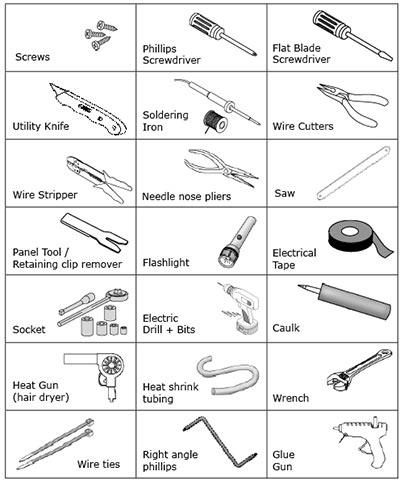
Basic subwoofer installation
Subwoofers are specialized speakers that reproduce low notes. They're a popular component in many audio systems because they produce deep, strong bass. They also make your other speakers more efficient by diverting notes that full-range speakers strain to reproduce.
Subwoofers come in a variety of sizes and shapes. The most common type is an unpowered, component subwoofer. This subwoofer lacks a built-in amplifier as a power source, so you will need to hook it to an external amp to draw current. (Some subs have built-in power supplies. See page 3). Also, while some subwoofers can be used without a separate box in space-saving free-air installations, most require a strong enclosure to operate properly.
The most basic element of component subwoofer installation is a snap. Mount your component subwoofer to an appropriate enclosure by connecting the leads to the terminal cup, and using mounting screws. It shouldn't take more than a few minutes. You'll then run the wiring to a nearby amplifier. You'll have choices of how you wire your sub. You can wire in parallel for maximum output, or series for a higher-impedance, multiple woofer setup.
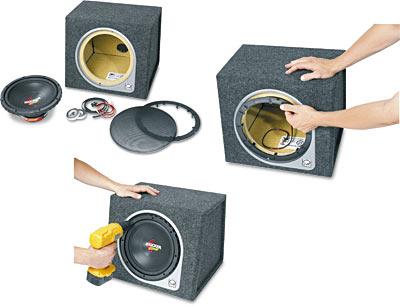
You should be able to mount your subwoofer in a ready-made enclosure in just a few minutes.
Ready-made subs
Ready-made subwoofers are the easiest way to get better bass, because the manufacturer has already built the box and installed an appropriate speaker. Some ready-made enclosures have as many as three subs in them. You pick the style and size you like, and match it to your amplifier, your available space, and the rest of your system.
In sedans, ready-made, non-amplified subwoofers usually go in the trunk. If you're feeding it adequate power, the bass it produces will be strong enough to penetrate through the back seat. Just connect the speaker wires from the amplifier and secure the enclosure with straps or brackets. Make sure you're not blocking access to your spare tire and, if you drill holes for the brackets, work carefully and be sure you're not cutting through the gas tank or a brake line.
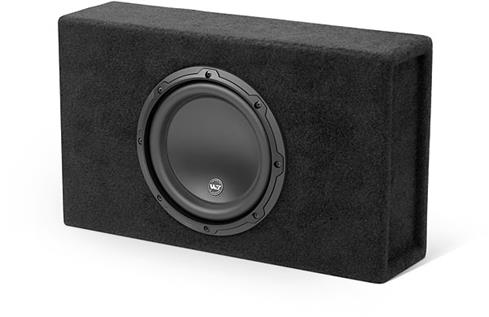
This enclosure from JL Audio comes with the sub already mounted.
If you're installing a subwoofer that comes with a built-in amp, you won't have to hook up speaker wires, but you will have to install a patch cord (or tap into your speaker leads for the input signal). You'll need an amplifier wiring kit for power, ground and turn-on leads. That usually means you will need to run wire under your seats.
Powered subwoofers
Powered, or amplified, subs offer an ease-of-use that's handy if you drive a rented or leased vehicle. Because of their portability, these subs can be removed quickly if you sell or exchange your vehicle. They also take up less space than a separate amplifier and subwoofer.
Be extra careful to anchor a subwoofer in a hatchback, station wagon, or sport utility vehicle. It could become airborne and injure someone if you stop suddenly.

The Sound Ordnance B-8PT is a compact powered sub that fits under the seat. It's designed for smaller vehicles or pickups.
Pre-fabricated sub enclosures
While ready-made subs have their advantages, you'll have a greater choice of subs if you go with a component subwoofer and an appropriate enclosure. It's more work, yes, but you get to create the sound you want. You choose the subwoofer or subwoofers that suit your musical needs best, and then select the box size that will optimize their sonic properties. Most component subwoofers don't come with hardware, so you might have to provide your own screws. Also, you might need speaker wires and hardware to connect the speaker to the terminal cup in the box. Finally, find some brackets or straps to hold the enclosure in your vehicle.
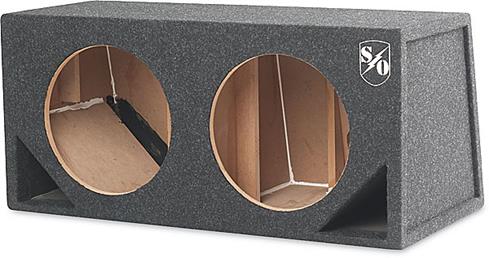
Sound Ordnance makes a variety of enclosures to accommodate most sizes of subs.
Wiring and break-in
If you go with the most common type of subwoofer installation — a component sub in a box hooked to an amplifier — you will have to consider various wiring possibilities before you start.
A 2-channel amplifier gives you outputs for two speakers. Of course, that doesn't mean you have to connect two subwoofers. You can hook up one, two, or maybe even four. To be safe, you just need to be aware of the impedance of your subs and the "load" capability of your amplifier. These factors will determine which wiring method you should use. For more information, check out our collection of subwoofer wiring diagrams.
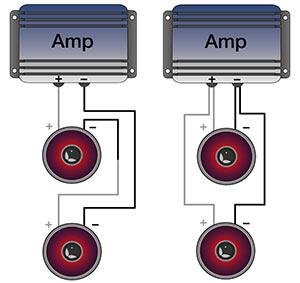
Basic subwoofer wiring.
Typically, a car stereo amp "sees" a 4-ohm impedance. When we say an amplifier is stable down to 2 ohms, we're usually referring to the minimum impedance it can handle in stereo (2-channel) mode, not bridged (mono) mode. The lower the impedance (resistance or "load") an amplifier sees, the more power it produces, and the louder your music plays.
A common way to get a 2-ohm stable amp to produce the extra power it delivers at lower impedance is to wire your speakers in parallel. Remember — while series wiring always raises your impedance, parallel wiring always lowers it.
To wire your speakers in parallel, connect the positive (+) leads of both speakers to the amplifier's positive (+) terminal, and the negative (-) leads of both speakers to the amp's negative (-) terminal. You can increase your system's impact dramatically by hooking up two subwoofers (in parallel) to each of your amp's channels.
After you complete the wiring, break in your subwoofer properly. Play the sub at low volume for approximately 20 hours to condition it before you turn up the volume. This will improve the sub's performance and lifespan.
Building your own subwoofer box
An enclosure does more than simply hold the woofer; it is an integral part of the system. A properly sized and built enclosure can turn an inexpensive woofer into a good performer, while a poorly designed or constructed enclosure will make even the finest woofer sound awful.
There are two main challenges in fabricating an enclosure — making sure it contains the proper volume of air, and controlling the cabinet resonances that otherwise will compete with the sound from the woofer and color its sound.
The ideal volume of an enclosure (length x width x height) will vary depending upon the woofer you select. The enclosure volume for your woofer is usually quoted as internal volume. Therefore, in calculating the overall external dimensions of the box, you must take into account the thickness of the board, the space occupied by the speaker and any internal bracing.
Once you know the internal volume you want to achieve, you'll decide on the dimensions of the enclosure. As a rule of thumb, make sure no internal dimension measures more than three times that of any other. But don't make them too close to each other or you will have a cube — one of the worst acoustic shapes for a speaker.
So keep those two rules in mind: don't make don't make one side too much longer than the other and don't make them too close to the same. Nearly any shape will be fine. It's the volume that matters most.
Finally, determine whether your box will be sealed or ported. A sealed box is the easiest to design and build, and protects the woofer against subsonic bass that can affect its performance. A ported box uses a tube (port) that reinforces the bass produced by the woofer. It can offer excellent, high-output performance, but is more challenging to construct.
For more on the topic, check out our article How to Build A Subwoofer Box.
Comments (17)
Please share your thoughts below.




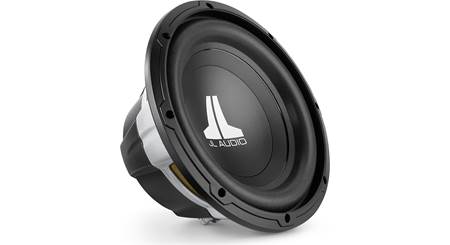
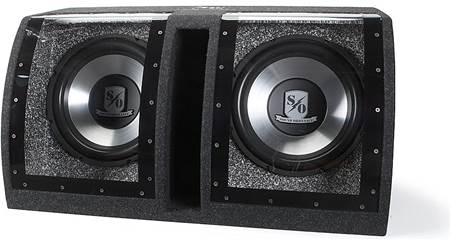

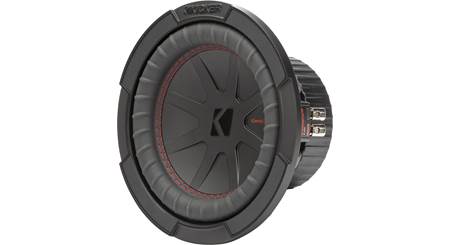
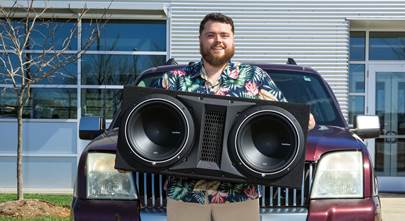


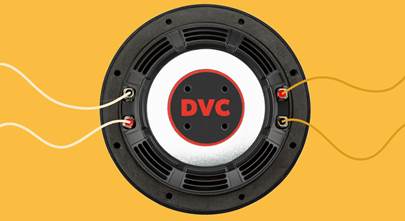
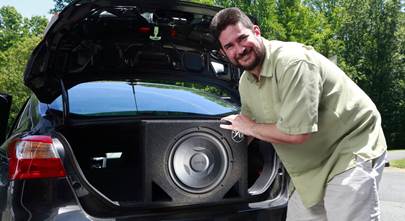
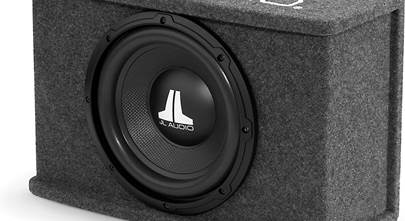
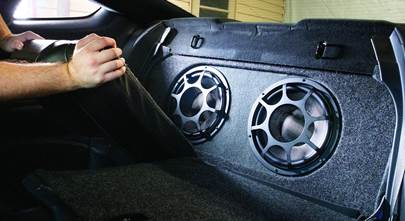
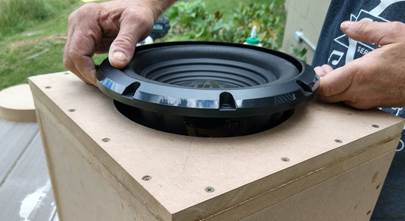

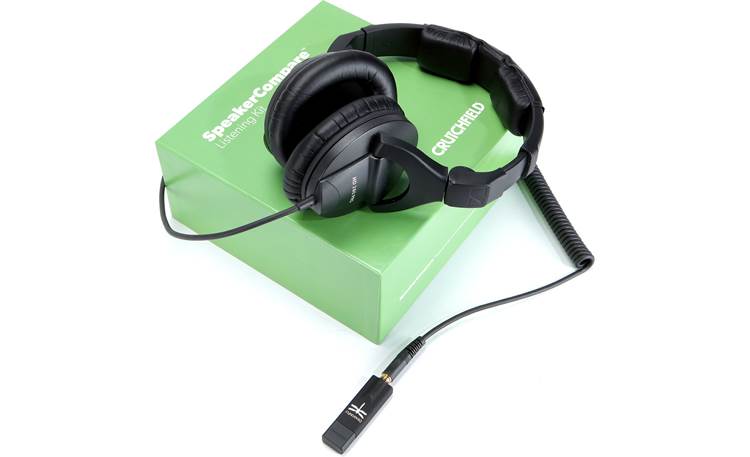
Cameron from Greensboro
Posted on 7/21/2022
I have a sub box that doesn't have the actual speaker connected to it what wires do I need to be able to hook it up ????
Stephen from Sydney
Posted on 1/27/2019
If a cube enclosure is not ideal then how do you figure out the best shape?
Alexander H. from Crutchfield
on 1/31/2019
Jordan from Mt Airy
Posted on 6/2/2017
All the diagrams online show the wiring straight to the subs and not through a box with terminal cups first. So instead of having the wires ran 1 from positive to one speaker and 1 from negative to the other speaker Im having to wire a positive and negative to one terminal cup and another positive and negative to the other terminal cup. How does this effect my ohm load? I have a mono amp powering (2x) DVC 4ohm subwoofers.
Alexander Hrabe from Crutchfield
Posted on 8/15/2016
Paul, I've passed your question along to our sales team for the best answer. An advisor will contact you soon to help you find a solution.
Paul from San Jose
Posted on 8/12/2016
Hi, I have a Lexus ls430, and the rear sub 8" is blown. The sub is 12 ohm impedance. It's a unicorn. I was going to try the Dayton 8+8 dvc sub. Would it work in either series or parallel? I did call the tech line today, before I came across the Dayton and they just said, we don't have a replacement. There is an old thread on a forum that ppl had successfully used kicker 10c88 8 ohm, but they don't make that anymore. What to do without replacing the amp or buying a $500 speaker from the dealer? Thank you
Alexander Hrabe from Crutchfield
Posted on 7/6/2016
Daniel, give us a call. An advisor can help you with the necessary gear to get your speaker/sub working for you. It's hard to know from your question what the application is -- car or home? Depending on that information, you'll need different equipment.
Daniel Paniagua from Salinas
Posted on 7/5/2016
I have a pioneer speaker/subwoofer I don't really what it exactly is. But it has two opening where the sound comes out of and it is about 3 feet tall. It has 2 pairs of 2 openings for I think cables with one colored red and the other is black. Any idea of what cables they are or how I can use this to play music from my iPhone ??
Alexander Hrabe from Crutchfield
Posted on 6/27/2016
Alec, we carry a variety of wiring kits. For more information on choosing the right one for you, check out this article or give us a call.
Alec from cypress
Posted on 6/24/2016
Hey, so i have 2 10' kickers and a boss 800 watt amp, what kind of wires do i need to wire this whole thing up?
Alexander Hrabe from Crutchfield
Posted on 4/25/2016
Zack, this is a great guide for matching amps and subs based on impedance, power, and number of voice coils. Once you're sure your amp and sub are a match, check out this article on how to wire your sub.